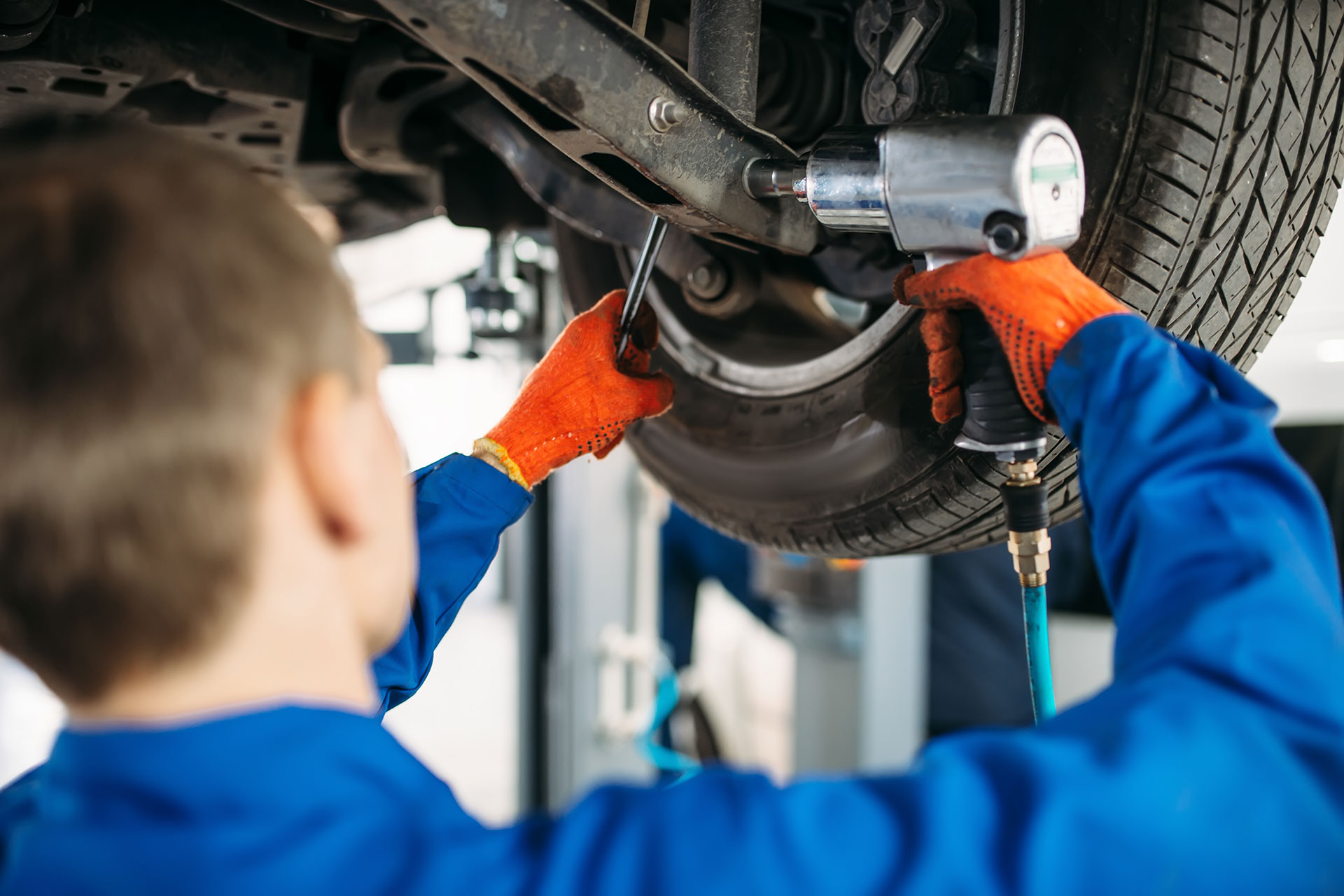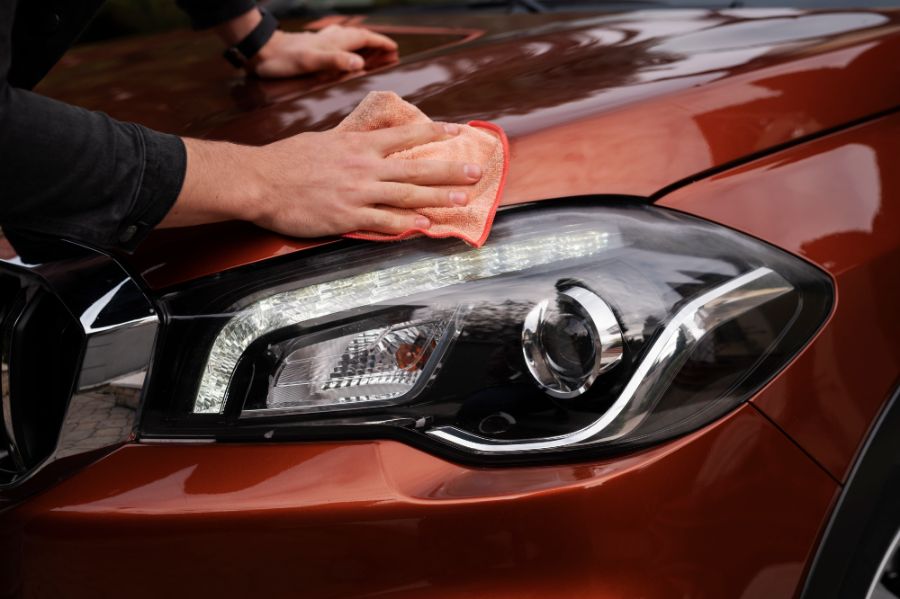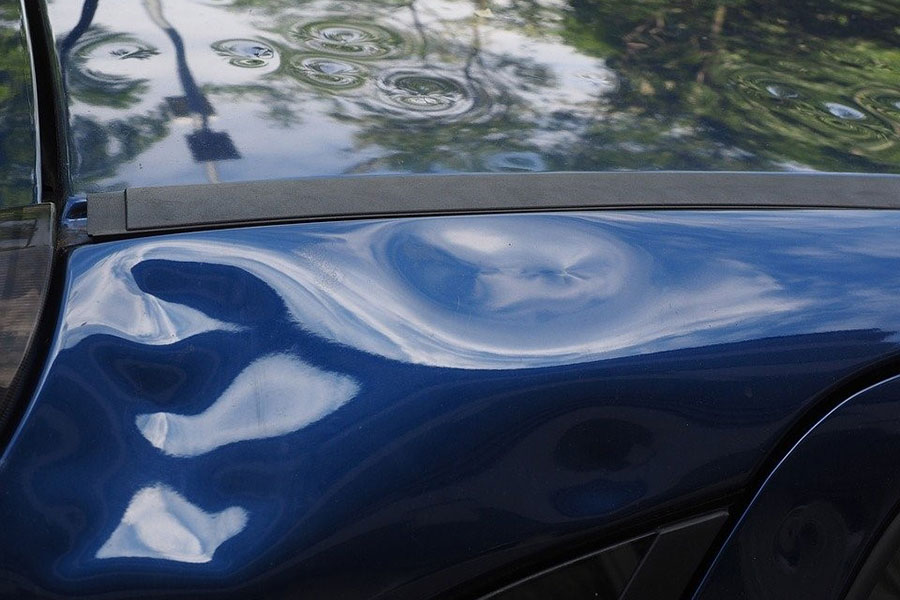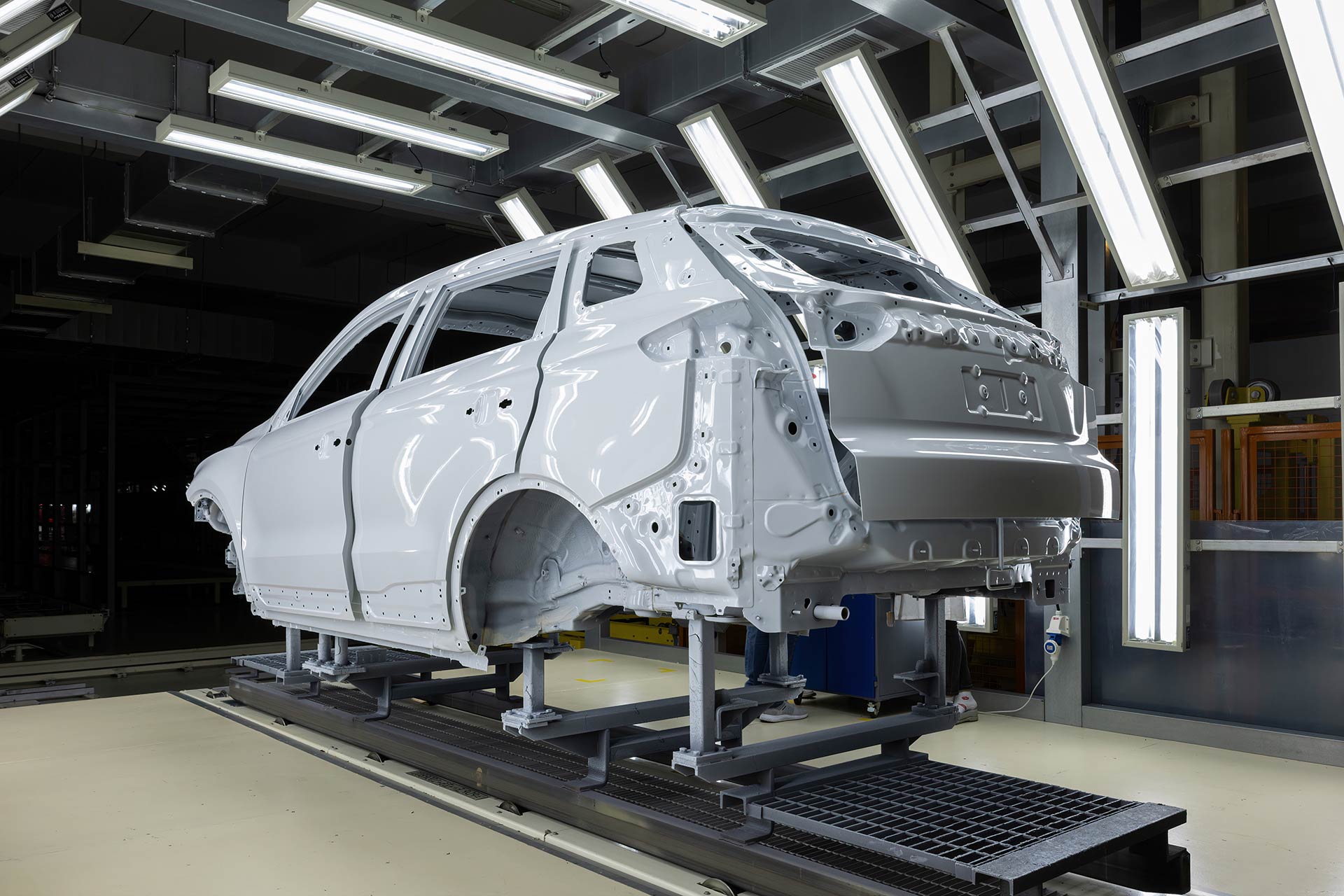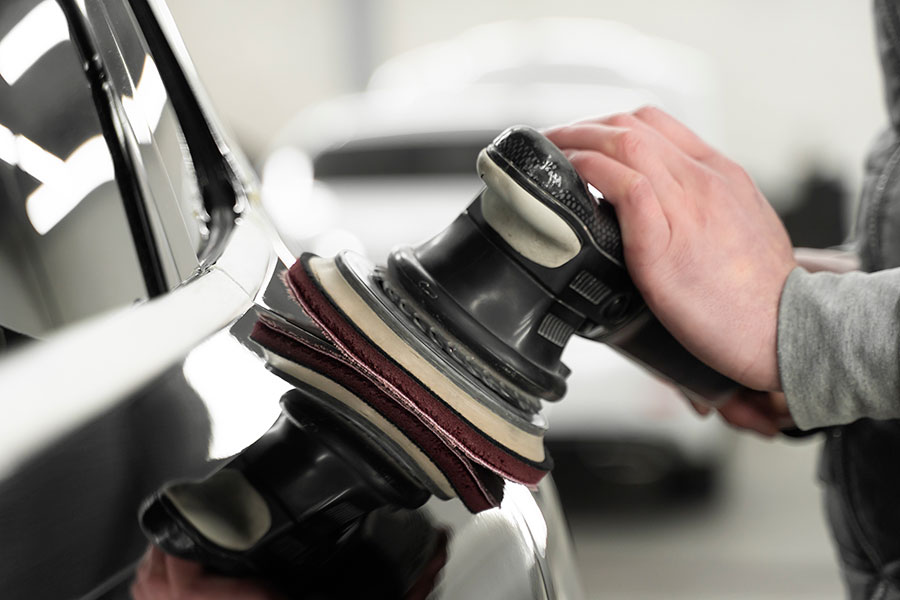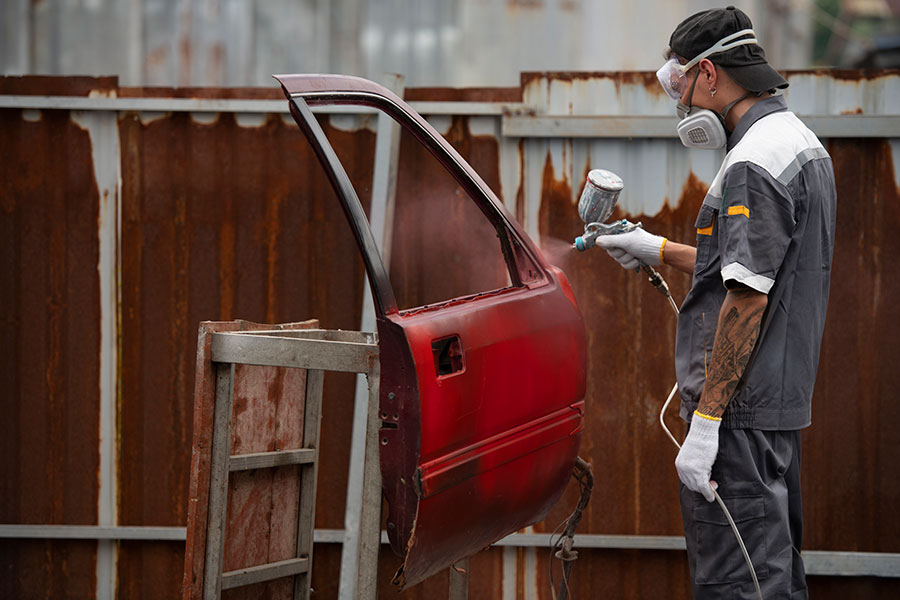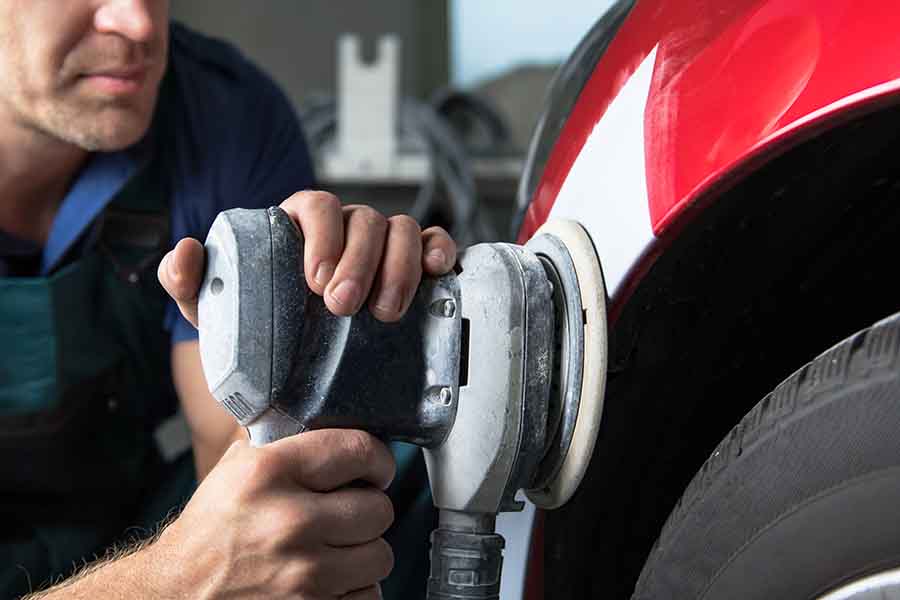Ever wondered what goes on behind the garage doors at an auto body shop? The auto body repair process can seem like a mystery, but it's crucial for getting your ride back in shape after an accident or wear and tear. From assessing the damage to the final touches, this process involves several detailed steps that ensure your vehicle looks and functions as good as new. We'll dive into what makes a quality repair job, breaking down the key stages and what you should expect when you hand over your keys. Whether it's a minor scratch or major collision damage, understanding this process will make you more informed and confident in choosing the right shop for your car's needs.
Understanding Auto Body Repair
Auto Body Basics
Auto body repair is crucial for maintaining a vehicle's safety and looks. It involves fixing physical damages on a car's exterior. These repairs can range from minor scratches to major collision impacts. Professionals in this field use specialized tools and techniques to restore vehicles.
They assess the damage carefully before starting their work. This step ensures they choose the right approach for each repair. It's not just about making a car look good again. It's also about keeping drivers and passengers safe on the road.
Common Damages
There are several types of damages that auto body shops handle. Dents, scratches, and collision impacts are among the most common. Each type requires a different repair method.
For instance, removing a dent might involve using a plunger or a special tool that pulls the dent out. Fixing scratches may require sanding the affected area and applying new paint. Collision impacts often need more extensive repairs. They might include replacing parts of the car's body or frame.
Professional Skills
Repairing a vehicle's body takes skill and precision. Professionals in this field have trained for years to master their craft. They know how to use a wide range of tools effectively.
Some of these tools are simple, like hammers and pliers. Others are more complex, like hydraulic lifts and computerized paint-matching systems. The goal is always the same: to restore the vehicle to its original condition or better.
Advanced Tools
The tools used in auto body repair shops are advanced and varied. They include everything from basic hand tools to sophisticated machinery. For example, paintless dent removal (PDR) tools allow technicians to fix dents without needing to repaint the area.
Welders are used to repair or replace damaged metal parts. Spray guns apply even coats of paint, ensuring a smooth finish. Each tool plays a critical role in the repair process.
Initiating the Repair Process
Selecting a Shop
Finding a reputable auto body repair shop is crucial. Look for certifications like I-CAR or ASE. These show the shop meets high standards.
Certifications matter. They ensure technicians have up-to-date skills. Shops with these badges care about quality.
Getting Estimates
Before work starts, get a preliminary estimate. This outlines repair costs and helps avoid surprises.
Estimates can vary. It’s smart to compare a few. This step reveals the repair scope and potential hidden damage.
Scheduling Repairs
Once you choose a shop, schedule the repair. Bring important documents like your insurance policy and vehicle registration.
Scheduling sets the repair timeline. It helps the shop prepare for your car. This process makes everything smoother.
Assessing Vehicle Damage
Visual Inspection
Professionals start by closely examining the vehicle's exterior and interior. They look for obvious signs of damage, such as dents, scratches, and broken parts. This step is crucial as it gives them a first impression of the vehicle's condition.
They also check the car's frame for any misalignment. A damaged frame can affect how the car drives. If not fixed, it could lead to more problems down the road.
Computer Diagnostics
Next, technicians use specialized tools to diagnose deeper issues. These tools connect to the car's computer system. They help find problems that aren't visible to the naked eye.
This technology checks the engine, transmission, and other critical systems. It ensures nothing is overlooked. The data collected helps in creating a more accurate repair plan.
Total Loss Evaluation
Sometimes, the damage is too severe. In these cases, repair technicians must decide if a vehicle is a total loss. They compare the cost of repairs to the car's current value.
If fixing the car costs more than it's worth, they declare it a total loss. This decision impacts how insurance companies handle claims.
Repair Plan Creation
After assessing all damages, professionals create a detailed repair plan. This document outlines every step needed to fix the car. It includes parts that need replacement, repairs required, and an estimated timeline.
The repair plan is essential for several reasons. It helps technicians stay organized and work efficiently. It also provides car owners with a clear understanding of what will be done.
Coordinating with Insurance
Filing Claims
After assessing vehicle damage, it's crucial to navigate the insurance claim process efficiently. First, contact your insurer to report the accident. They'll require details about the incident and the damage extent. It's wise to have your policy number handy during this call.
Your insurer will guide you through filing a claim. This often involves submitting photos of the damage and possibly an accident report. Timeliness is key here. Promptly reporting ensures a smoother process.
Insurance Adjusters
Next, an insurance adjuster plays a pivotal role. They assess the damage to determine repair costs covered by your policy. The adjuster visits either your home, the repair shop, or you may need to drive to their location.
They scrutinize the vehicle and compile a detailed report. Their findings are crucial as they influence how much the insurance will cover. It's important to remember that adjusters aim to ensure repairs are necessary and costs are reasonable.
Repair Approvals
Repair shops and insurance companies must agree on the cost and scope of repairs. Shops provide a repair estimate, including parts and labor costs. The insurance company reviews this estimate against the adjuster’s report.
If there's a discrepancy between the shop's estimate and what the insurance is willing to pay, negotiations occur. Most reputable repair shops are experienced in dealing with insurers and can help advocate for necessary repairs.
The goal is to reach an agreement that satisfies all parties: ensuring your car is safely repaired while staying within the bounds of your insurance coverage.
Collaboration Benefits
This coordination between your auto body repair shop and insurance company offers several benefits:
- Ensures repairs are completed professionally.
- Helps manage out-of-pocket expenses.
- Streamlines the repair process, reducing stress and inconvenience.
Preparing for Repair
Damage Assessment
The first step is disassembling the damaged area. This is crucial for revealing any hidden damage that wasn't visible initially. Technicians carefully remove parts to get a clear view of the impact's extent. Sometimes, what seems minor on the surface may hide significant issues underneath. This thorough examination ensures that all damage is accounted for before repair begins.
Mechanics use specialized tools to take apart the affected sections. They document every step to make sure everything goes back correctly. It's a detailed process that requires skill and patience.
Ordering Parts
Once the damage is fully assessed, ordering replacement parts becomes the next priority. This stage can introduce delays, as some parts may not be readily available. The waiting period varies depending on the make and model of the vehicle and the specificity of the needed parts.
Repair shops often have relationships with parts suppliers to expedite this process. However, customers should prepare for a possible wait. This downtime is a good opportunity to coordinate further with insurance companies, updating them on any additional findings.
Vehicle Prep
Before actual repair work starts, vehicles undergo thorough preparation. This includes cleaning the areas around the damage and removing any parts that could interfere with repairs. Proper preparation ensures that repairs are done efficiently and safely.
Technicians also protect undamaged sections of the vehicle. They cover these areas to prevent accidental scratches or dents during repair. This careful prep work lays a solid foundation for the rest of the repair process.
Addressing Structural and Body Repair
Frame Restoration
Restoring a vehicle's frame is crucial. Technicians use hydraulic machines to straighten frames. They measure against factory specifications for accuracy.
This ensures the car drives straight. It prevents tire wear and other issues. Skilled workers handle this with care.
Panel Replacement
Sometimes, repairing is not enough. Damaged panels might need replacement. Technicians weld new panels in place carefully.
They match the original vehicle design. This maintains the car's appearance and value. It’s a detailed process.
Paint Matching
After structural repairs, paint matching comes next. Experts find the exact color of your car. They use advanced technology for this.
The goal is to make the repair invisible. Your car looks as good as new. This step requires precision and expertise.
Alignment Correction
Correcting alignment is vital for safety. Technicians use specialized equipment for this task. They adjust the wheels to align with the road properly.
This improves handling and safety. It’s important for a smooth ride. Professionals ensure every detail is right.
Quality Control
Quality control is the final step. Experts inspect the repair work thoroughly. They check every detail against high standards.
This guarantees your car's safety and performance. It’s about peace of mind for you. Quality control ties everything together.
Refinishing and Painting
Preparation Steps
Before applying any paint, auto body shops must prepare the surface meticulously. This involves sanding the vehicle's body to create a smooth base. Sanding removes imperfections and ensures that primer adheres properly.
After sanding, technicians apply a primer. This layer acts as a foundation for the paint, enhancing its durability and appearance. Priming is crucial for preventing rust and ensuring that the paint sticks well.
Color Matching
Matching the paint color precisely is critical in auto body repair. Technicians use advanced technology to find an exact match. They consider the car’s make, model, and year to ensure consistency.
Once the right shade is identified, mixing the paint begins. This process requires precision to achieve the perfect color blend. It ensures that the repaired area blends seamlessly with the rest of the vehicle.
Application Techniques
Applying paint involves skill and expertise. Technicians use spray guns for an even coat. They apply multiple layers, starting with a base coat.
Each layer must dry before applying the next. This method ensures depth in color and a flawless finish. The final step is applying a clear coat. This layer protects the paint from UV rays and scratches.
Curing Process
The curing process is vital for durability and finish quality. It involves drying the paint under controlled conditions. Sometimes, this includes baking the car in a special oven.
Curing solidifies the paint, making it more resistant to damage. It also enhances the glossiness of the finish. Proper curing guarantees that the paint job lasts long and withstands everyday wear and tear.
Final Inspection and Delivery
Quality Check
After a vehicle goes through refinishing and painting, it's not quite ready to hit the road yet. The next critical step is a thorough quality check. This process involves examining each repair detail against high standards. Technicians look for any discrepancies in paint work, alignment, and overall functionality. They ensure everything matches the vehicle's original specifications. It's all about making sure no stone is left unturned.
The inspection covers both exterior and interior aspects. They check the paint for consistency and finish, ensuring there are no drips or mismatches. Body repairs are scrutinized for alignment and fit. Inside the car, they verify that all components are working correctly. This comprehensive approach guarantees that the vehicle is not only visually appealing but also safe and reliable.
Cleaning and Detailing
Once the vehicle passes the quality check, it moves on to cleaning and detailing. This step is vital for presenting the car in its best light. Professionals thoroughly wash the exterior to remove any dust or particles from the repair process. They then polish the body to bring out the shine of the new paint job.
The interior gets attention too. Workers vacuum the inside, clean the windows, and wipe down surfaces to ensure the car looks and smells fresh. This meticulous cleaning process adds a finishing touch, making the car feel brand new.
Customer Walkthrough
Before handing over the keys, a final walkthrough with the customer is essential. This step highlights transparency and customer satisfaction as top priorities. The service advisor will go over the work performed in detail, pointing out all repairs and any replacement parts used. They'll answer any questions and address concerns, ensuring the customer feels confident in the quality of work.
This face-to-face interaction builds trust between the auto body shop and its clients. It's an opportunity to demonstrate professionalism and commitment to excellence. Plus, it gives customers peace of mind knowing their vehicle has been restored to its pre-accident condition or better.
Summary
Navigating the auto body repair process might seem daunting, but understanding each step ensures your vehicle gets the care it deserves. From assessing damage to the final inspection, every phase is crucial for restoring your ride's glory. Trust in the process and know you're not alone; professionals are ready to guide you through, ensuring quality and safety every step of the way. Your car’s recovery mirrors trust—built piece by piece, leading to a result that’s both satisfying and reliable.
Now's the time to take action. Don't let vehicle damage set you back. Reach out to a trusted auto body repair shop and kickstart your car’s journey back to perfection. With clear insights and expert hands, your vehicle will be back on the road in no time, looking as good as new. Remember, the road to recovery starts with a single step—make yours count today.
Frequently Asked Questions
What is auto body repair?
Auto body repair involves fixing physical damage to the exterior and structure of a vehicle, including dents, scratches, and frame damage.
How do I start the auto body repair process?
Begin by contacting a reputable auto body shop to schedule an assessment of your vehicle's damage.
Do I need to assess my vehicle's damage before repair?
Yes, a professional assessment identifies all damage, ensuring nothing is overlooked during the repair process.
Should I involve my insurance company in the auto body repair process?
Yes, especially if the repairs are due to an accident. Coordinating with your insurance can help cover some or all of the costs.
What does preparing for repair involve?
Preparation includes cleaning the vehicle and removing parts that require separate or additional repair work.
What are structural and body repairs?
These repairs address the vehicle’s frame and exterior to restore its original condition and safety standards.
Why is refinishing and painting important in auto body repair?
Refinishing and painting not only restore the vehicle’s appearance but also protect against corrosion and increase longevity.
What happens during the final inspection and delivery?
The repaired vehicle undergoes a thorough inspection to ensure all work meets quality standards before being returned to the owner.
